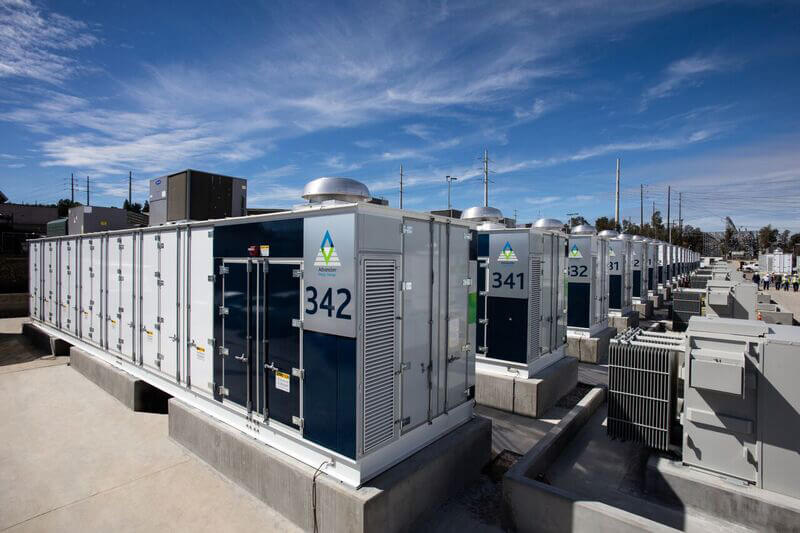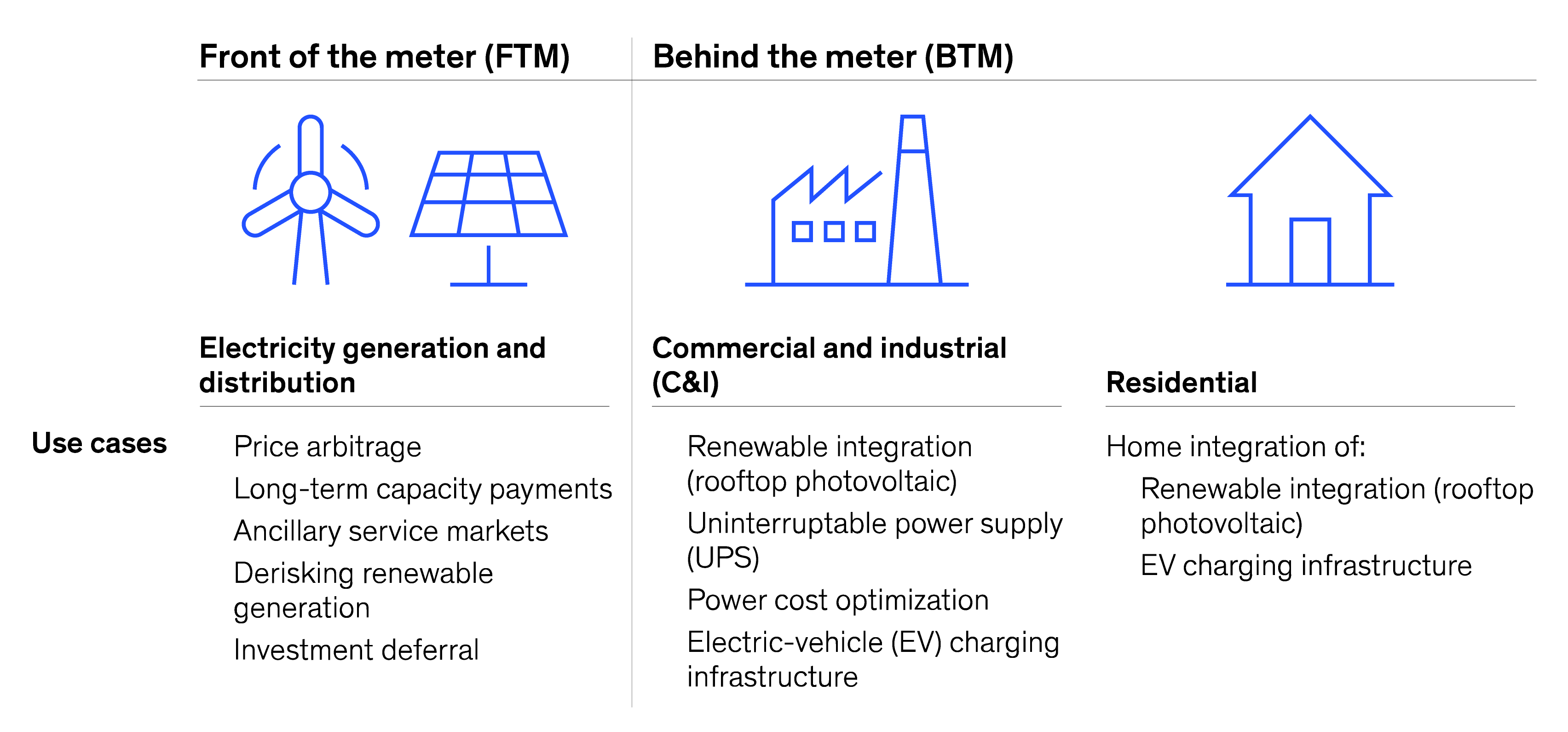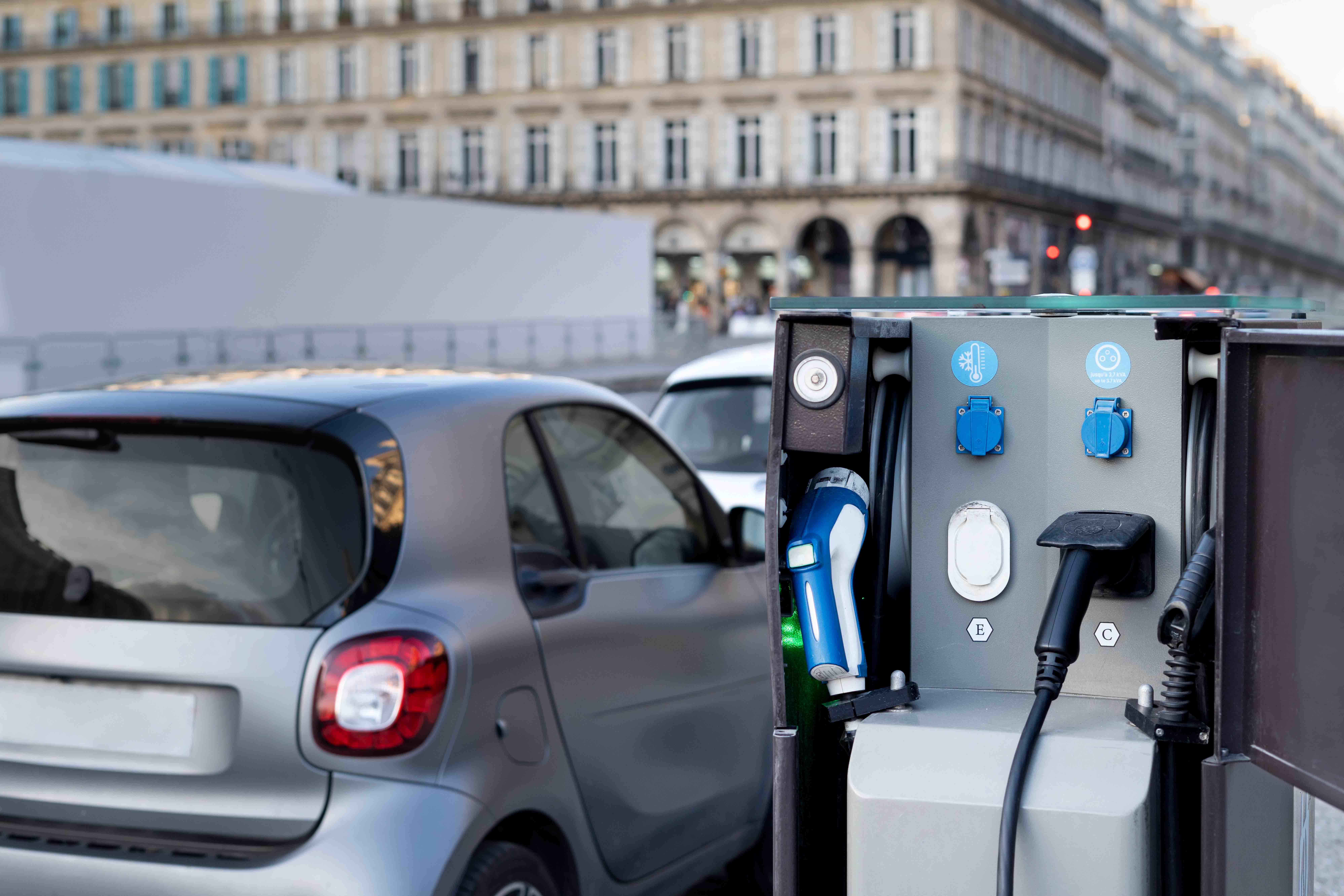As we move away from fossil fuels for our energy needs, finding a way to reliably store vast amounts of renewable energy becomes critical. Simply put, we need to figure out how we can still keep our communities and industry powered when the wind isn’t blowing or when the sun isn’t shining. Continued improvements in battery energy storage technologies are driving down prices and improving quality, meaning they are increasingly being adopted to manage this variability.
What are Battery Energy Storage Systems?
According to the National Renewable Energy Laboratory (NREL), a BESS is an “electrochemical device that charges (or collects energy) from the grid or a power plant and then discharges that energy at a later time to provide electricity or other grid services when needed”.
The systems are significantly more complicated than batteries you might find at your house and use clever software algorithms and control systems, to determine when to store and release energy to meet the power requirements of the user.
 Battery Energy Storage System
Battery Energy Storage System
Blackridge Research points out that a BESS usually contains the following components:
- Battery cells to store and release chemical energy. Various battery chemistries are currently available such as Lithium-ion, Vanadium redox flow, Sodium-ion, etc.
- Battery Management System (BMS) “ensures battery safety and proper operation”, by keeping the battery within current, voltage, and temperature limits.”
- Power Conversion System (PCS) is utilised by the BESS to transform DC to AC and vice versa. “AC from the power supply is converted to DC during battery charging. When the battery empties, DC power is transferred to AC power to power the BESS application.”
- Energy Management System (EMS) “controls when, why, and how much electricity the BESS receives.”
- Security systems can comprise multiple systems, each doing a different task, such as the HVAC system keeping “the BESS at the right temperature and humidity”, while the fire protection system “detects smoke and prevents fires.”
Due to recent technological advancements, the prices of batteries (especially lithium-ion batteries) have fallen significantly over the past 15 years, making them a viable option for more and more applications.
Services provided by BESS
To understand the services and benefits provided by BESS, we must first learn the main types of BESS. McKinsey and Company outlines that there are essentially 3 types of BESS installations: “front-of-the-meter (FTM) utility-scale installations, which are typically larger than ten megawatt-hours (MWh); behind-the-meter (BTM) commercial and industrial installations, which typically range from 30 kilowatt-hours (kWh) to ten MWh; and BTM residential installations, which are usually less than 30 kWh.”

NREL outlines the following as the main services currently provided by a BESS:
- Arbitrage: This “involves charging the battery when energy prices are low and discharging during more expensive peak hours”.
- Firm Capacity or Peaking Capacity: Utility companies and system operators need to make sure that they have enough capacity to fulfil electricity “demand during the highest-demand periods in a given year”, which is known as peak demand. This peak demand is usually met with generators and gas plants, but “depending on the shape of the load curve, BESS can also be used to ensure adequate peaking generation capacity”.
- Transmission and Distribution Upgrade Deferrals: “When anticipated growth in peak electricity demand exceeds the existing grid’s capacity, costly investments are needed to upgrade equipment and develop new infrastructure. Deploying BESS can help defer or circumvent the need for new grid investments by meeting peak demand with energy stored from lower-demand periods.”
- Black Start: “When starting up, large generators need an external source of electricity to perform key functions before they can begin generating electricity for the grid. An on-site BESS can provide this service, avoiding fuel costs and emissions from conventional black-start generators.” Some generators also operate off-grid to meet the power needs of a big manufacturing plant and BESS would also be a great black start solution for this.
Some other services provided by BESS include load shifting, Uninterruptible Power Supply (UPS), peak shaving, grid stability and frequency regulation (FCAS), operating/spinning reserves and ancillary services, demand response programs, and many more.
Since batteries are very versatile and can be used for many applications, they are open to value stacking, which refers to BESS maximising “their value to the grid and project developers by providing multiple system services” as NREL points out. Since some services a BESS provides such as black start and spinning reserves are “used infrequently”, they can be easily designed to provide multiple services to improve their utilisation and value.
Thermal Runaway
In a guidance report prepared by GHD for the Australian Energy Council, the authors point out that despite the various services and benefits provided by BESS, “there have been numerous self-heating and thermal runaway incidents at grid-scale BESS facilities over the past decade”.

A thermal runaway incident is “where one exothermal process triggers other processes, finally resulting in an uncontrollable increase in temperature. This can result in the destruction of the battery or, in severe cases, in fire.” It is a key concern many have regarding BESS and there need to be sufficient measures put in place to prevent it from happening, such as gas detection sensors, active cooling systems, Current Interrupt Devices (CID), safety or pressure vents, remote monitoring, thermal insulation, additives, separators and fire suppression systems.
Different battery chemistries have different susceptibilities to thermal runaway and this difference exists even within the same family of battery chemistries. For example, the thermal runaway is higher for Nickel Manganese Cobalt (NMC) batteries compared to Lithium Iron Phosphate (LFP), even though they are both classified as Lithium-ion batteries.
Different Battery Chemistries
The battery chemistry for a BESS is chosen based on the BESS application and the user’s needs. The following are chemistries that are available now or in development:
- Lithium-ion batteries are currently the most dominant batteries as they provide great cycle life and affordability. NMC was once the primary type of Lithium-ion batteries but LFP is now cheaper and this combined with LFP’s lower susceptibility to thermal runaway, has allowed LFP to overtake NMC in popularity. Furthermore, as the International Energy Agency (IEA) points out “while energy density is of utmost importance for EV batteries, it is less critical for battery storage, leading to a significant shift towards LFP batteries” in the BESS sector.
- Lead-acid batteries are a popular choice for BESS that usually cost less compared to Lithium-ion batteries but are less durable and have much lower efficiency.
- Vanadium redox batteries are a “very promising technology for energy storage and grid applications” as they “possess an extensive life cycle and can serve as storage solutions for both short and long” periods according to Blackridge Research. However, they have lower energy density compared to Lithium-ion batteries and hence need a larger footprint facility.
- Sodium-ion batteries are one to watch according to McKinsey & Company as have the “potential to be less costly” than LFP due to sodium being a more abundant element than lithium and are “less prone to thermal runaway”. That being said these batteries do have lower cycle life and lower energy density compared to Lithium-ion formulations.
A battery type that is quickly gaining popularity but isn’t yet commercially available for BESS systems is solid-state batteries, which replace the liquid electrolyte that ions flow through with a solid electrolyte. This provides several advantages, such as better energy density, a smaller footprint, less susceptibility to fires, quicker charging and discharging, etc.
Commercial and Industrial (C&I) Applications
EV charging infrastructure is one of the main areas where BESS installations are gaining momentum, whether that be for regular vehicles such as sedans and SUVs, public transport, semi-trucks used by companies to transport goods, etc.
 EV Charging Infrastructure
EV Charging Infrastructure
Another segment of C&I that McKinsey & Company identifies is “critical infrastructure such as telecommunication towers, data centres, and hospitals” where lead-acid batteries provide backup power through a UPS, until “power resumes or diesel generators are turned on”. In this sector, Lithium-ion BESS can not only replace less efficient lead-acid batteries, but they can also reduce our reliance on “less environmentally friendly diesel generators”.
Applications in harsh environments such as mining, construction, oil and gas exploration, and events such as outdoor festivals are also ripe for BESS deployment. However, many of these companies may try out hybrid solutions before making the switch completely to BESS.
Other Commercial and Industrial applications, where BESS can replace more traditional forms of power generation and storage include public infrastructure, microgrids, commercial buildings, and manufacturing factories and facilities.
Sources
Blackridge Research & Consulting. (2024, June 25). An Essential Guide to Battery Energy Storage System (BESS). https://www.blackridgeresearch.com/blog/what-is-battery-energy-storage-system-bess-explained#types-of-bess-
Bowen, T., Chernyakhovskiy, I., & Denholm, P. (2019). Grid-Scale Battery Storage: Frequently Asked Questions. National Renewable Energy Laboratory. https://www.nrel.gov/docs/fy19osti/74426.pdf
Enel X. (n.d.). What is BESS and how does it work? https://corporate.enelx.com/en/question-and-answers/what-is-battery-energy-storage
GHD. (2023). Battery Energy Storage Systems: Guidance Report. Australian Energy Council. https://www.energycouncil.com.au/media/v3gfijdo/bess-final-report_battery-report.pdf
IEA. (2024, April). Batteries and Secure Energy Transitions: Executive summary. https://www.iea.org/reports/batteries-and-secure-energy-transitions/executive-summary
Jarbratt, G., Jautelat, S., Linder, M., Sparre, E., Rijt, A., & Wong, Q. H. (2023, August 2). Enabling renewable energy with battery energy storage systems. McKinsey & Company. https://www.mckinsey.com/industries/automotive-and-assembly/our-insights/enabling-renewable-energy-with-battery-energy-storage-systems
National Grid. (2023, May 9). What is battery storage? https://www.nationalgrid.com/stories/energy-explained/what-is-battery-storage
